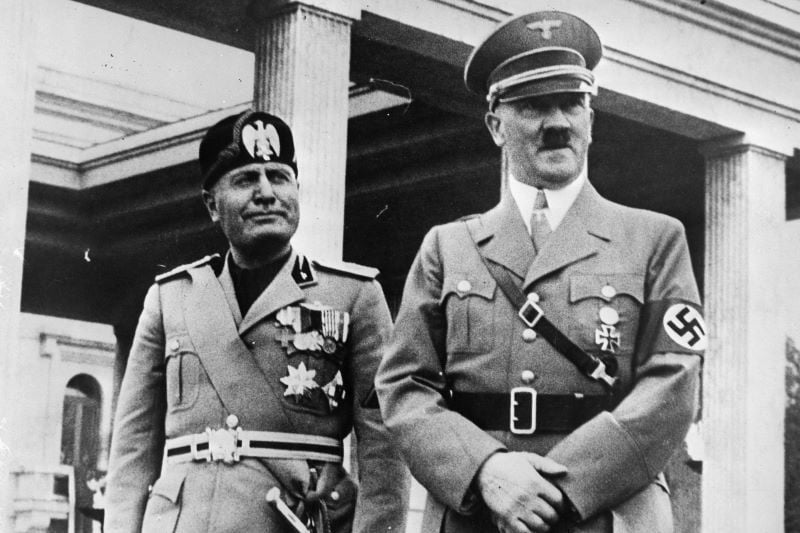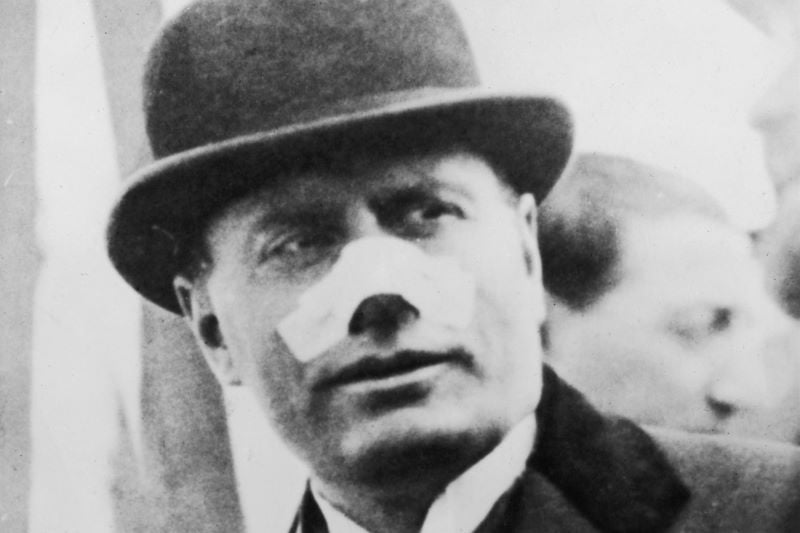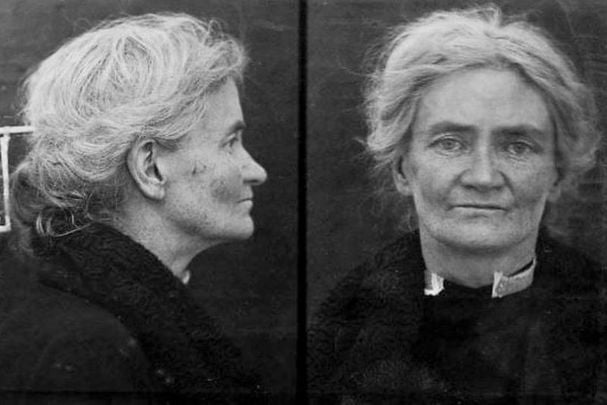On April 7, 1926, Irish woman Violet Gibson attempted to assassinate the Italian fascist leader Benito Mussolini.
How had Violet Gibson’s life gone from the well-heeled upbringing of Merrion Square in Dublin to dying in a mental asylum having attempted to assassinate a world leader and how different the world may have been if she had succeeded?
If she had hit her target, Mussolini’s reign as the “strongman” would have ended and his successes could not have emboldened Adolf Hitler. Il Duce’s legacy is still felt in Italy (his granddaughter Alessandra is a Member of the European Parliament), and in Greece where the Golden Dawn proclaims themselves fans of the fascist leader.
What’s worse is that Gibson’s attempted assassination triggered a wave of support for Il Duce which possibly helped strengthen his grip on Italy.
Her upbringing was one of privilege. Her father was made 1st Baron Ashbourne and went on to serve as Lord High Chancellor of Ireland from 1885 to 1905. She grew up dividing her time between Dublin and London, and at the age of 18 was a debutante in the court of Queen Victoria.
It was noted, however, that as a child Gibson was often sick with scarlet fever, pleurisy, bouts of ill-defined "hysteria" and that she had a “violent temper.” During her younger years, she also showed an interest in Christian Science and then theosophy, but at the age of 26 in 1902, she converted to Catholicism.

Benito Mussolini and Adolf Hitler in 1937 (Getty Images)
By 1913, Gibson had been married to an artist and widowed. She then moved to Paris and worked for pacifist organizations. In that same year, she contracted Paget's disease (an abnormal breakdown of bone tissue) and a mastectomy left her with a nine-inch scar. She then returned to England where surgery for appendicitis left her with chronic abdominal pain.
Gibson became more and more obsessed with religion during her 40s. She went on retreats, followed the Jesuit scholar John O'Fallon Pope and became fixated on the ideas of martyrdom and "mortification."
By 1922 she had had a nervous breakdown and was committed to a mental asylum having been declared insane. Two years later, along with a nurse named Mary McGrath, she traveled to Rome where she lived in a convent. By this point, she was convinced that God wanted her to kill someone as a sacrifice.
In February 1925, Gibson got hold of a gun and shot herself in the chest. Miraculously, she survived.
In March 1926, Gibson’s mother passed away. By April of that year, her obsession with killing someone had refocused; it was now trained on Mussolini.
On the fateful day of April 7, Gibson went to Palazzo del Littorio with her gun wrapped in a black veil, and a rock, in case she needed to break Il Duce’s car windshield. While Il Duce drove through Rome's Piazza del Campidoglio after leaving an assembly of the International Congress of Surgeons, where he had delivered a speech on the wonders of modern medicine, Gibson jumped from the crowd and shot the leader.
Her rock was unnecessary as the leader walked among the crowds just feet from Gibson. Her first shot grazed his nose and on the second shot, the gun misfired. The fascist leader stayed very calm and told the crowds “Don't be afraid. This is a mere trifle." Mussolini was only slightly injured and after having his nose bandaged he continued his parade.

Benito Mussolini after he was shot by Violet Gibson (Getty Images)
Later he said that while he was ready for “a beautiful death” he did not want to die at the hands of an “old, ugly, repulsive" woman.
In custody for her crimes, Gibson said she shot Mussolini “to glorify God,” who had sent an angel to keep her steady.
The Gibson family wrote to the Italian government to apologize for her actions. Gibson was then declared a "chronic paranoiac" and returned to England and St Andrew's Hospital. She died in 1956. There were no mourners at her funeral.
Benito Mussolini was finally killed on April 28, 1945, during the final days of World War II. He and his mistress were taken to Milan and left in a suburban square hanging upside down from a metal girder above a service station.
* Originally published in 2015. Last updated April 2024.




Comments